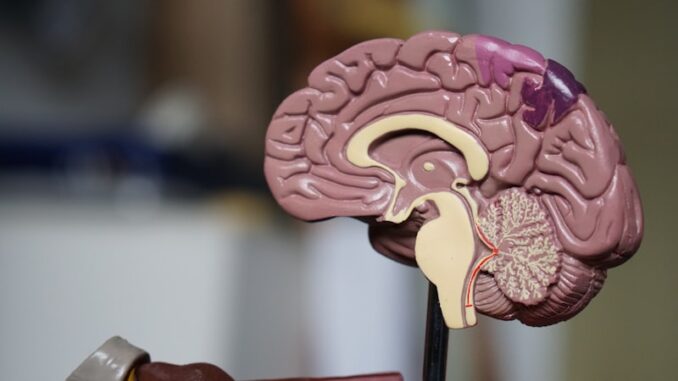
What are the 10 Types of Mental Disorders?
Understanding Age Patterns and Early Recognition
Mental health disorders affect millions of people worldwide, cutting across all demographics, ages, and backgrounds. Understanding the different types of mental disorders and when they typically emerge can help individuals, families, and healthcare providers recognize symptoms early and seek appropriate treatment.
Mental health disorders are medical conditions that significantly impact a person's thinking, emotions, behavior, and overall functioning. These conditions arise from complex interactions between genetic, biological, environmental, and psychological factors.
1. Anxiety Disorders
The most common category of mental health conditions, affecting approximately 40 million adults in the United States. These involve excessive fear, worry, and related behavioral changes.
Key types: Panic disorder (late teens/early twenties), Generalized anxiety disorder (any age, often adulthood), Social anxiety disorder, Specific phobias.
2. Mood Disorders
Persistent disturbances in emotional state that significantly impact daily functioning, affecting how individuals feel, think, and handle daily activities.
Key types: Major Depressive Disorder, Bipolar Disorder, Persistent Depressive Disorder, Seasonal Affective Disorder. Depression can occur at any age, but first episodes often occur in late teens or early twenties.
3. Psychotic Disorders
Involve distorted thinking and perception, including hallucinations, delusions, and disorganized speech or behavior. Peak onset for schizophrenia is early twenties for men, late twenties for women.
Key types: Schizophrenia, Brief Psychotic Disorder, Schizoaffective Disorder, Delusional Disorder. Early warning signs often appear during teenage years.
4. Eating Disorders
Severe disturbances in eating behaviors and related thoughts and emotions. Can cause serious physical and psychological damage if left untreated.
Key types: Anorexia nervosa, Bulimia nervosa, Binge eating disorder. Recent trends show increasing rates in older adults and younger children.
5. Substance Use Disorders
Harmful use of alcohol, drugs, or other substances leading to significant impairment or distress. While experimentation often begins in adolescence, disorders typically develop later.
Key types: Alcohol Use Disorder, Cannabis Use Disorder, Stimulant Use Disorders, Opioid Use Disorder. Adolescents are particularly vulnerable due to ongoing brain development.
6. Neurodevelopmental Disorders
Manifest early in development, characterized by developmental deficits impairing personal, social, academic, or occupational functioning.
Key types: ADHD (early elementary years), Autism Spectrum Disorders (by age 2-3), Learning Disorders (when academic demands increase), Intellectual Disabilities.
7. Personality Disorders
Enduring patterns of thinking, feeling, and behaving that deviate significantly from cultural expectations. Most diagnosed after age 18, though signs may be present earlier.
Clusters: A (Paranoid, Schizoid, Schizotypal), B (Antisocial, Borderline, Histrionic, Narcissistic), C (Avoidant, Dependent, Obsessive-Compulsive).
8. Trauma and Stressor-Related Disorders
Develop following exposure to traumatic or stressful events, involving characteristic symptoms causing significant distress or impairment.
Key types: PTSD, Acute Stress Disorder, Adjustment Disorders. Children may show different symptoms than adults. Can develop from early childhood through late adulthood.
9. Obsessive-Compulsive and Related Disorders
Characterized by obsessive thoughts and compulsive behaviors causing significant distress or interference with daily functioning.
Key types: OCD (often begins in childhood/adolescence), Body Dysmorphic Disorder (adolescence), Hoarding Disorder, Trichotillomania. Earlier onset more common in males.
10. Sleep-Wake Disorders
Problems with sleep quality, timing, and amount, causing daytime distress and impairment in functioning.
Key types: Insomnia (any age, more common with aging), Sleep Apnea (middle age), Restless Leg Syndrome, Circadian Rhythm disorders (often affect adolescents/young adults).
Age Onset Timeline
Neurodevelopmental
Disorders
Anxiety
Eating Disorders
Mood
Psychotic Disorders
Personality
Disorders
Trauma
Sleep Disorders
Mental Health Statistics by Age Group
Prevalence varies significantly across age groups, with many disorders having peak onset periods during adolescence and early adulthood.
The Importance of Early Recognition and Treatment
Understanding when mental health disorders typically emerge is crucial for several reasons:
- Early identification allows for prompt intervention, leading to better outcomes
- Age-appropriate treatment approaches are essential for different developmental stages
- Prevention of symptom progression through timely intervention
- Reduced stigma through increased mental health literacy
Risk Factors Across Age Groups
Various risk factors influence the development of mental health disorders at different life stages:
- Genetic predisposition plays a role across all ages
- Childhood trauma can have lasting effects manifesting in different disorders throughout life
- Academic pressures during adolescence
- Work stress in adulthood
- Social isolation in older adults
Creating a Supportive Future
Mental health disorders affect individuals across all age groups, but understanding typical onset patterns can help with early identification and intervention. While this guide outlines common age ranges for different disorders, it's important to remember that mental health conditions can develop at any age.
If you or someone you know is experiencing symptoms of a mental health disorder, regardless of age, seeking professional help is crucial. Mental health professionals can provide accurate diagnosis, develop appropriate treatment plans, and offer ongoing support.
Remember that mental health is a crucial component of overall well-being at every stage of life. By understanding these conditions and their typical onset patterns, we can work together to create a more supportive and understanding society that prioritizes mental health care for all individuals, regardless of age.
Leave a Reply